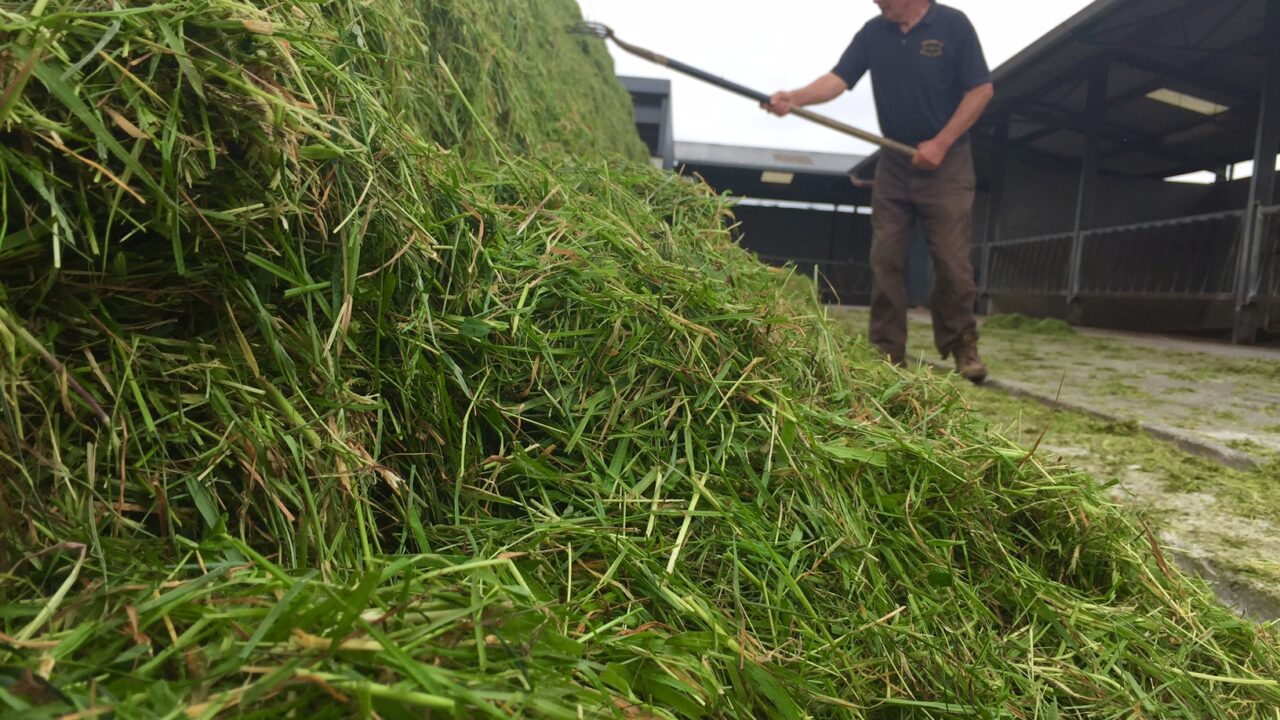Grazing conditions were difficult during the first three months of the year and many farmers are only now beginning to close silage ground.
Silage is an important winter feed and it can account for 30% of the annual feed budget on beef farms and 20-25% of the total diet of a dairy cow.
Ideally farmers should have first-cut silage ground closed, to allow for late-May harvesting, but where conditions have been difficult it can be pushed out to April 10.
Yield, quality and performance
According to Teagasc, the single biggest factor contributing to the cost of producing silage is the yield of the crop.
However, aiming for an excessively heavy crop can have negative implications on quality. Therefore, striking the balance between yield and quality is important.
Work carried out by Teagasc shows that delayed cutting boosts yields, but it can also have a negative impact on silage quality and performance.
For dairy cows in-milk, feeding high-quality silage (+75% DMD) will result in improved forage intake, more milk solids from forage, better rumen health and lower concentrate feeding levels, when compared to poor-quality silages.
Therefore, farmers need to identify the type (quality) of silage they need and make management decisions, such as fertiliser applications and planned cutting date, around these requirements.
How much fertiliser should I apply?
To produce a 5t/ha (DM) crop, Teagasc recommendations say 125kg/ha or 100units/ac of Nitrogen (N) is required.
In good growing conditions, grass will use 2.5kg/ha/day or 2units/acre/day of Nitrogen. Therefore it is important to apply N at least 50 days before cutting to ensure full utilisation.
Grass swards with high levels of perennial ryegrass (recently-reseeded swards) will use N more efficiently than older swards, it says, and will have a 25% higher N demand.
In wetter soil conditions, fertiliser (N) can be split 50:50; for example 50% in early April and the remainder two weeks later – to reduce the risk of N loss.
Don’t forget about P and K
Both Phosphorous (P) and Potassium (K) are also essential to maximise grass yields and so an adequate supply of these nutrients in the soil is critical.
The research body advises farmers to assess their most recent (three-to-five years) soil test reports to determine P and K requirements.
Typically, a crop of grass silage will remove approximately 4kg of Phosphorous and 25kg of Potassium for each tonne of grass Dry Matter harvested.
To meet these requirements, at a relatively low cost, organic manures such as farm yard manure and cattle slurry can be used.
Teagasc recommendations say that index 2 fields require three bags of 0:70:30 (N:P:K) and four bags of 27% Nitrogen if no slurry is available.
If 3,000 gallons of slurry (7% Dry Matter) is applied to silage ground, three bags of 27:2.5:5 (N:P:K) will provide enough nutrients for the silage crop to grow.


